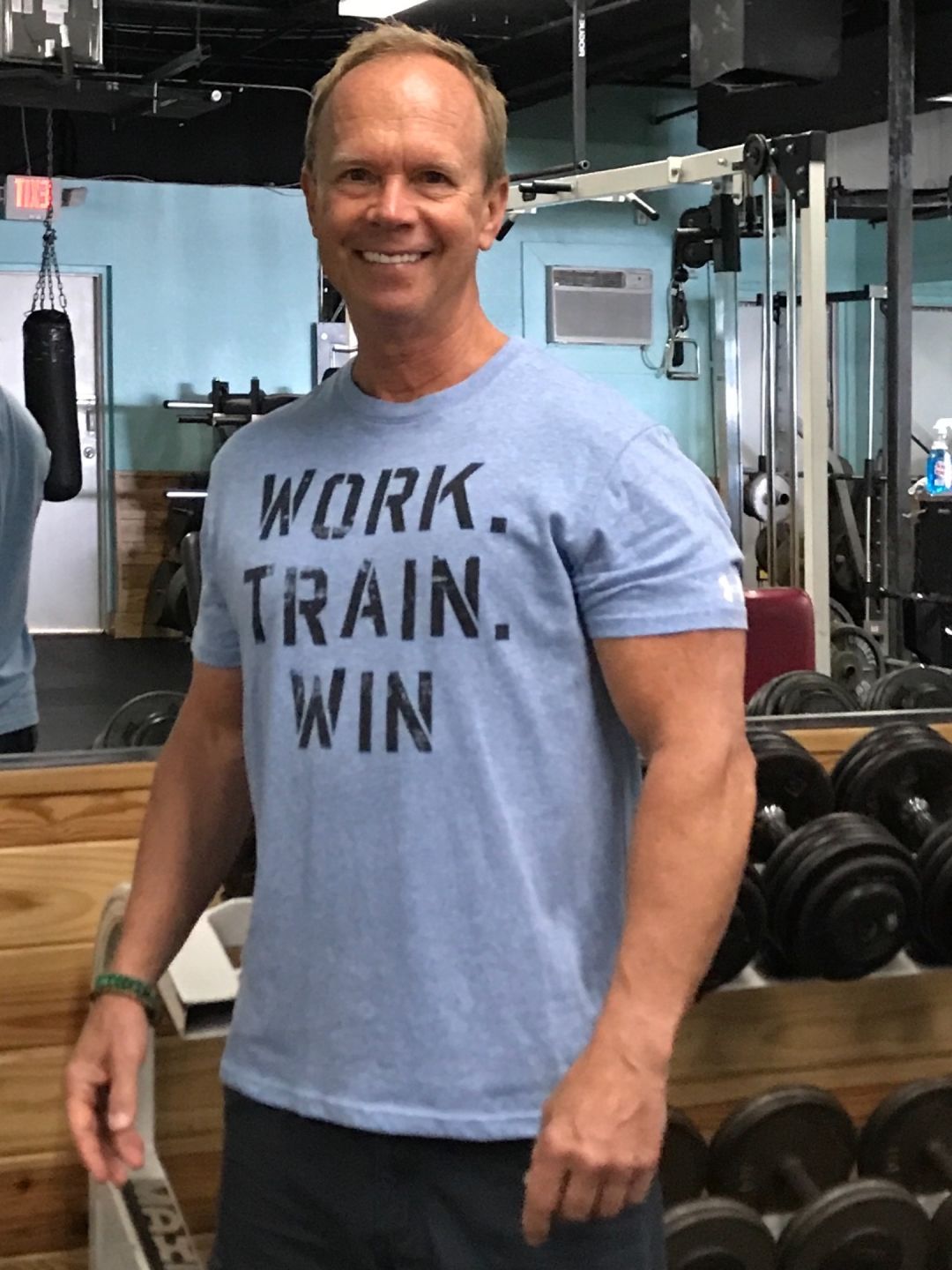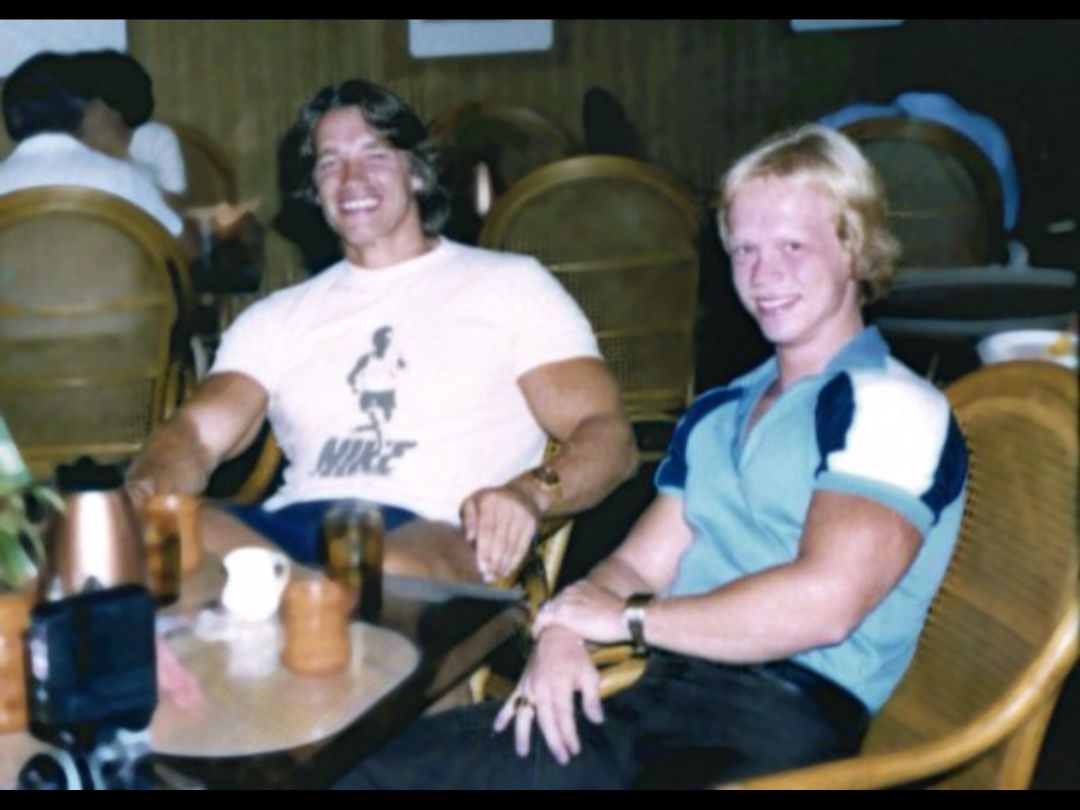Celebrity Trainer Steve Schewe on How to Work Out Well at Any Age

Steve Schewe
Image: Courtesy Photo
Good luck getting Steve Schewe of Steve’s Fitness to disclose his celebrity client list—many of whom he's been training for decades, from California to right here in Sarasota.
One reason for Schewe's popularity and longevity—other than that he's a human vault—may be because he’s one of the founders of the workout industry as we know it. He stays on the cutting edge of what's up-and-coming, continually adapting to the changing industry. Case in point: these days, he trains most of his clients virtually, a medium he adopted during the pandemic.
Schewe’s fitness journey began in 1975, when he joined a health club in Encino, California. That quickly turned into a job as a program director and trainer and led to a desire to learn about bodybuilding. A year later, in 1976, he joined the mecca of bodybuilding, Joe Gold’s World Gym, which drew the famous bodybuilders of the day, from Arnold Schwarzenegger to Lou Ferrigno.
Back then, the industry was so new that everyone was hungry for knowledge. One day, when Ferrigno came to town, he taught the bodybuilders how to put a 45-pound plate under one end of an incline bench and do biceps curls with a bigger stretch than they were doing at the time. In the spirit of shared information, Schwarzenegger once approached Schewe in the gym and asked, “What do you do for calves?”

Bodybuilders Serge Nubret, Steve Schewe, Frank Calta and Jim Morris on Muscle Beach in Venice, CA, 1979.
Image: Photo Courtesy
Schewe, who's now 68, went from placing in bodybuilding competitions throughout the '70s to becoming the first certified program director through the Health & Tennis Corp of America. Since then, he’s trained in holistic nutrition, senior fitness instruction, high-intensity interval training (HIIT), fascia training and functional anatomy.
As Margo Howard, an advice columnist and the daughter of Ann Landers, says, “Because I am 116 (well, really mid-70s) and exercise-averse (if you don’t count aerobic shopping), my MD husband felt I was in danger of rusting. I told him I was doing Stair-Master because we live in a duplex. He said that in no way counted, so he gave me to Steve. For the first time I’m doing…well, God knows what I’m doing, but I no longer hate exercising, and with Steve’s tailor-made regimen, I’m feeling as though there is hope for this historically sedentary old bag. In other words, if I can train with Steve, anyone can!”
You can see why he's just the guy to tap for our questions on healthy aging.
Tell us how your early bodybuilding years have informed your training style over the decades.
“While training at World Gym in the '70s, the fitness industry was just launching, and those of us at the forefront had much to learn. The basic principles from those early days have influenced my style, such as consistency, full range of motion, intensity, form, and paying attention when our bodies talk to us.
“I also learned the importance of what not to do. One example was around 1977, while I was managing a health club and spa, and a new industry was born: women’s aerobics classes. They were popular immediately. Large rooms were set aside at clubs, with classes every hour. In the beginning, the floors were made of cement and covered with thin carpet. It only took about three months of the high intensity activity to cause knee and/or ankle pain in the instructors. I became aware of how rapidly an overuse injury could manifest, and since then, I've avoided high-impact training with my clients.”

Arnold Schwarzenegger and Steve Schewe in Hawaii, 1978.
Image: Photo Courtesy
What training information has become outdated? And what has it been replaced with?
“Being a trainer is now more than just supervised exercise. My industry has had a ‘no pain, no gain’ philosophy for the past 45 years; however, my philosophy is ‘no pain, period.’
“A few examples of changes in the industry include the '70s theory of ‘calories in vs. calories out.' We now know that was wrong. [How your body burns calories depends on a number of factors, including the type of food you eat, your body's metabolism and organisms living in your gut, according to Harvard Medical School.] In the 1990s, it became clear that not all carbs are created equal. For instance, to better understand rising rates of obesity and diabetes, we now look at America’s consumption of processed carbohydrates and the importance of gut health in our microbiome. Also, we used to think the vagus nerve delivered messages from the brain to the gut, but now we know it’s the opposite. I guess that means our ‘gut feeling’ was correct.
“The industry has also switched to core exercises vs. crunches, which may adversely affect the spine. And we are transitioning from steady-rate to HIIT training. For instance, I employ a method called Opposing Muscle Group Training. Many trainers have their clients do a set of pushing, then chat for 30-60 seconds while they rest up for their next set. Instead, I have my clients do a pulling exercise while the pushing group is resting. This allows ‘high intensity’ to be a part of their routine, and they accomplish increased caloric expenditure as well as cardio benefits while doing so.”
What's one workout change we can make right now?
“Often, trainers ask a client to do a certain number of repetitions for every exercise movement. Since the early '80s, I’ve employed a system that I helped develop called Rate of Perceived Exertion (RPE) training. It allows flexibility so every workout can be different.
“For instance, why tell a client to do 15 reps if at 13 reps they are becoming fatigued? Or why did they stop at 15 if they could have done 18 that day? RPE training requires the trainer to focus on the client’s levels of exertion, which may prevent injury and also allow them to set personal records.”
What are your thoughts on machines vs. dumbbells?
“Imagine sitting in a chest press machine. Notice that the two handles come together and join at one welded hinge. That machine will do one motion forward on that hinge. We cannot tell if we’re using one hand more than the other because the machine will move forward with either hand exerting pressure.
“Now, when using dumbbells or cables, we have an infinite number of angles and positions to push through, and each hand must do 100 percent of its own work. Range of motion might be hindered on a machine, while a free weight can travel through the entire joint range of motion. Additionally, dumbbells and cables are often used in a standing position, which improves balance and employs our core muscles.”
Talk about chronological age vs. biological age.
“Chronological age is what’s on your driver’s license, while biological age is how old your cells are. This does not progress at the same rate for everyone. The good news is that we can be proactive and slow the biological aging process with lifestyle choices, such as consistently eating healthy foods, exercising and reducing stress.
“Keep in mind that changes due to aging require adaptive techniques. An example is that our bones require compression to become stronger. You can eat all the minerals needed for strong bones, but if you aren’t doing resistance exercises that compress the bones, those minerals won’t be utilized."
We all know that keeping our brains sharp is key in aging. What methods do you suggest?
“I have a few suggestions. First, an interesting note is that scientists have identified which parts of the brain are engaged during different types of activities. One example is the frontal lobe, which is engaged during resistance training. Studies show that it improves cognition, memory and functionality. The great news about resistance training, when done correctly, is that it can engage many areas of the brain, unlike a recumbent bike or treadmill, which engages only the temporal lobes.
“Another benefit of exercising is that higher levels of muscle mass are associated with improved health outcomes, such as reduced risk of falls, improved cognition, mental health, blood pressure, insulin sensitivity, body composition, body weight, sleep quality, bone health, cardio-respiratory fitness and physical function.
“Also, aging is not a single process. We should strive for overall function. I challenge my clients to improve their activities of daily living by lifting a heavy grocery bag properly, brushing their teeth with the other hand, or carrying a heavy purse on the other shoulder. One key component, which is important to everyone over 60, no matter how you are aging, is to know how to correctly sit down and stand up from a chair.”
What mistakes do we make when it comes to our health?
“I’ve always said that the human body is 60 percent water, and water runs downhill fast. The obvious mistake is not being consistent in our training and nutritional choices. We need plenty of water and adequate protein to build healthy skin, muscles, organs, connective tissue, hormones and glands. When given the chance, our bodies possess the knowledge they need to strengthen and heal themselves.
“How long do you think it takes the human body to produce 25 million new cells? The answer is one second. What we do and what we eat each day are critical in making sure that those cells are healthy."

